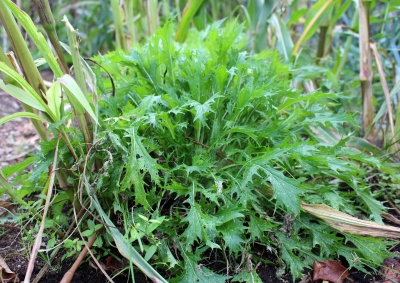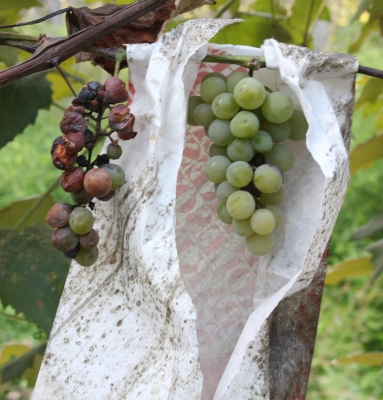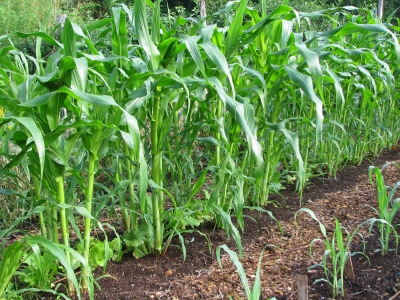HOW GREEN, OR NOT, IS MY THUMB?
/14 Comments/in Fruit, Gardening, Planning/by Lee ReichApples a Bust, Pears a Success, Gooseberries a Bust, etc.
Early autumn is a good time for me to find a sunny spot on the terrace with a comfortable chair, pluck a bunch of grapes from the arbor overhead, and ponder the fruits of this year’s labors. And I mean “fruits,” literally: what were my successes, what were my failures, and what do future seasons hold?
To many people, to too many people, “fruit” means apples, the equivalence having deep roots since pomum is Latin for both apple and fruit. My apple crop this year, whether measured in pounds or number of fruits, is zero. Among my excuses are the wrong rootstock for the site, trees still recovering from last year’s onslaught of 17-year cicada egg-laying, apples’ pest problems making them among the most difficult fruits to grow east of the Rocky Mountains, and my low-lying valley location and surrounding forests further exacerbating pest problems.
Still, the rich flavor of the apples — when I do get some — keeps me trying. Next year I’m replanting with five new trees: Hudson’s Golden Gem, Macoun, Ashmead’s Kernel, Pitmaston Pineapple, and Liberty, all on Geneva 30 rootstocks. This year, I welcomed the time not needed in caring for the trees.
Pears did surprisingly well considering the extensive cicada damage they also endured. But pears always do well, especially the Asian pears. The challenge with European pears is ripening them to perfection. They need to be picked before they are ripe, chilled for a couple of weeks if they are an early maturing variety, then ripened in a cool room. As soon as the first fruits drop, I keep an eye out for a slight change in skin color for those fruits still hanging from branches, then take them if they separate with an easy snap when lifted and twisted from the branch.
Despite being relatively easy to grow, pears are underappreciated as garden fruit — these days, at least. One-hundred and fifty years ago, you might have perused 70 varieties in a nursery catalog; a hundred years ago, perhaps 30 varieties; in today’s catalogs, I count a dozen or so varieties. Not all my two dozen or so varieties are bearing yet. So far, the best of the lot are the buttery sweet Magness and spicy Seckel.
And More Failures
But let me get back to my failures; get them out of the way. Hardy kiwifruits, both Actinidia arguta and A. kolomikta had uncharacteristically light crops. The same goes for pawpaws, whose branches have, except for this fall, every year been weighted down with a heavy load of fruit, some branches even breaking. It’s most convenient to point my finger at the weather, the winter cold, for barren kiwi vines and pawpaw trees. Not that it was as cold as many past winters, but it did stay cold for longer periods.
The gooseberry crop looked very promising until late June, which is when my chickens discovered them (or remembered where they were). Gooseberries are usually very reliable so I’m optimistic about the future of eating berries from the two dozen or so dessert varieties I grow. I downsized my flock from seven to three chickens (and added two ducks), and plan to erect temporary fencing during the few weeks that the berries ripen in future years.
Big crops presented themselves, as usual, on various mulberry varieties and gumi. Birds swooped in to gobble them up. Last year, with all the cicadas to feed on, birds ignored both these fruits. Geraldi Dwarf mulberry grows only a few feet high so I’ll throw a net over it next year and let birds enjoy the other mulberry varieties, if they so choose.
The Very Sweet Taste of Success(es)
Enough talk about failures. On to successes . . . blueberries, my favorite and most reliable fruit, bore in abundance, as always. Sixteen bushes; about 150 quarts. Mmmmm.
Rain earlier in the season threatened grapes with disease. I enclosed about 75 bunches in white bakery bags, stapled shut, to fend off bees and wasps, diseases, and birds. The crop was in such abundance that harvest has been aplenty even from unbagged bunches. Actually, too “aplenty” from the variety Swenson’s Red, causing individual berries in bunches to ripen unevenly. Next year, I’ll prune more severely, sacrificing total yield while increasing quality and even ripening of fruits that remain.
Once unbagged grapes of a given variety have been harvested and eaten, we move on to the bagged grapes of that variety. Peeling back the white paper has generally revealed bunches that look perfect and taste delectable. Particularly tasty this year have been Glenora Seedless, Somerset Seedless, Mars, Swenson’s White, and Brianna.
And finally, another of my no-fail, no-spray, no-prune fruits: American persimmon, specifically the varieties Mohler and Szukis. Mohler has been ripening for about a month, dropping a dozen or so fruits daily, which I pick up from the ground. My ducks are especially fond of these fruits, and waddle, staring longingly within, around the outside perimeter of the low, temporary fence that keeps them at bay. (They do get to eat fruits that drop beyond the fence.)
The soft fruits taste like dried apricots that have been plumped in water, dipped in honey, and given a dash of spice. Mohler and Szukis are almost totally lacking in the puckery astringency common to many American persimmons. To remove any last traces of astringency, I subject fruits to a treatment used in Japan with Asian persimmons: alcohol. Freshly harvest fruits go into a bowl with a tablespoon of rye (locally made Coppersea Raw Rye), covered, for a day. The alcohol finishes ripening the fruits, keeps fruit flies at bay, and adds a nice punch to the flavor.
Grow Fruit, Many Kinds!
Too many people shy away from growing fruits because they are perceived as too difficult to grow. They can be; or not. Success comes from choosing the right fruits to grow, looking beyond apples, peaches, cherries, and the other usual fare. Success also comes from growing a wide variety fruits. (All this is covered in my newest book, Grow Fruit Naturally.) This year’s apple and gooseberry failures are hardly noticed with the abundance of blueberries, persimmons, and pears. And did I mention European black currants, red currants, and strawberries?
A BOUNTIFUL SEASON AND “DELIGHT”-FUL VINDICATION
/8 Comments/in Gardening, Planning, Soil, Vegetables/by Lee ReichMy Green Thumb, or Not?
I wish I could say that my ever-greener thumb is responsible for the baskets overflowing with tomatoes and ripe red peppers in the kitchen, and strings of fat, sweet onions hanging from garage rafters. Ripe figs hang lax from branches, a drop of honeydew in each of their “eyes” telling me they want picking. The season has been bountiful.
I can’t recall anything special that I did this season that would have boosted the harvest of so many different fruits and vegetables. The soil, as usual, got lathered with an inch deep layer of compost. Transplants and seeds got started with hand watering, then drip irrigation automatically quenched plants’ thirst from then on. I kept my usual eye out for insect or disease pests.
Further deflating my own gardening prowess is the fact that a lot of you readers also have experienced a season of bumper crops, right? (Not to wish ill upon your garden, but please tell me “no.”)
So let’s credit this season’s abundance on the weather. Rainfall was regular and sufficient up until August. Those periods of rain punctuated longer periods of intense sunlight in which plants no doubt reveled.
Temperatures also get credit. Very hot weather interfered with corn and pepper pollination last year; not so this year. Temperatures were neither too hot nor too cool all season long. Okra was the only vegetable complaining this year. Torrid weather is needed to keep those pods coming on. This summer, pods appeared on okra plants whenever the mercury soared, then the plants just sat, doing nothing, waiting out periods of cooler temperatures.
Good Show, Mustard
It’s time to render praise to a vegetable that has tasted and looked fresh and good all season long, every season, irrespective of the weather. That vegetable is mizuna, sometimes known as mustard cabbage or kaai ts’oi, or botanically as Brassica juncea or Brassica rapa nipponosica.
I sowed mizuna seeds along with lettuce and arugula seeds in the garden in April in a bed slated for corn planting later in June. Mizuna, lettuce, and arugula all provide greenery for early salads, enjoy cool spring weather, and are in and out of the garden quickly enough to be out of the way for a later crop such as corn. I pulled out these plants just before sowing corn — most of them. Arugula was anyway going to seed and the lettuce was soon to take a step in that direction.
Mizuna, though, was still looking fresh and green so I left it in place.
As corn stalks reached skyward, mizuna kept its fresh appearance and tenderness of spring. That corn bed is now ready for harvest and mizuna is still tender and tasty. Most kinds of mustard greens would have tough leaves and have gone to seed months ago. After the ears of corn are harvested, my plan is to dig out the corn plants, carry them off to the compost, and leave mizuna to carry on until really frigid weather turns its leaves to mush.
Mizuna flavor is mustardy, but only mildly so. Taste it and it seems to ooze vitamins and minerals, borne out by analyses showing it to be especially rich in pro-vitamin A and calcium.
Gardener’s Delight Unraveled
Did this season’s weather make for better-tasting tomatoes? Perhaps. Perhaps not. The main influences on tomato flavor are the amount of sunlight, the amount of water plants take up, probably plant nutrition, especially with respect to potassium and phosphorus, and — most importantly — the variety.
I’m happy with the taste of this season’s tomatoes but was eagerly awaiting ripening of the variety Gardener’s Delight. I grew Gardener’s Delight about 40 years ago and thought it was the best-tasting cherry tomato in the world. After not growing it for decades (other varieties got my attention), I grew it again last year, only to be disappointed in the flavor. That led me to wonder whether the apparent change in flavor was due to Fedco Seeds, the company from which I purchased the seeds, getting sloppy with their seed-saving, differing growing conditions (Wisconsin vs. New York), or whether I had become more discriminating in tasting my tomatoes.
As a test, this year I planted seeds of Gardener’s Delight from three sources: Fedco Seeds (www.fedcoseeds.com), Botanical Interests (www.botanicalinterests.com), a
nd Thompson & Morgan (www.thompson-morgan.com). The latter is a British seed company, the source of the seeds I planted 40 years ago. Last week, to a drum roll (in my head), I tasted Gardener’s Delight tomatoes from each of the three sources. They all tasted the same — and not very good. Fedco Seeds was exonerated.
Ruling out growing conditions since all my other tomato varieties taste as good as in seasons past, the verdict lies in my taste buds. Not that my taste buds themselves have become more discriminating. Instead, cherry tomato varieties have greatly improve over the past 40 years.
More specifically, the variety Sun Gold came on the scene more than 20 years ago (also introduced by Thompson & Morgan and now widely available). I think I speak for everyone in stating that Sun Gold is the best tasting cherry tomato ever. Gardener’s Delight may have been good in its day but it has been easily eclipsed by Sun Gold.
Whether the growing season is cloudy or sunny, or warm or cool (within reason), Sun Gold always offers a bounty of persimmon orange, delectable, sweet-tart tomatoes with bold flavor.
Controversial Garlic & Corn
/23 Comments/in Gardening, Planning, Soil, Vegetables/by Lee ReichWhen to Plant & Whether to Plant, Corn & Garlic
Into the ground goes the stinking rose. That’s garlic. As a matter of fact, by the time you read this my garlic cloves will have been in the ground for awhile, since the beginning of the month, already sending roots out into the soft earth.
Planting garlic this early is sacrilege in most garlic circles. But it may make sense.
Garlic needs a period of cool weather, with temperatures in the 40s, to develop heads. Without that cool period, a planted clove merely grows larger, without multiplying. Which is why it’s planted in fall. Spring-planted garlic might still get sufficiently chilled or needs to be artificially chilled, but yields are generally are lower than fall-planted garlic. 
Lower yields could also be because the cloves, planted in spring, must put energy into growing both leaves and roots. Roots grow whenever soil temperatures are above 40 degrees F., so fall-planted cloves start growing roots immediately. And for quite a while because, with the ground cooling more slowly than the air, balmy weather lingers long in the soil in fall, especially when it’s covered with an insulating layer of wood chips, compost, straw, or other organic mulch.
My reasoning for late summer planting rather than fall planting is that the sooner the bulbs are in the ground, the more time roots have to grow before temperatures drop consistently below 40 degrees. More root growth now means more roots to fuel leaf growth in spring which, in turn, means bigger heads to harvest next summer. More root growth also means that cloves are more firmly anchored into the ground through winter, so are less likely to heave up and out of the ground as it freezes and thaws.
The caution against planting as early as I suggest is that leaves might awaken and push up through the ground in fall, only to be snuffed out by winter cold. True. But garlic is a monocotyledenous plant, so its growing point, like that of other “monocots” (such as lilies, onions, grasses, orchids, and bananas), lies beneath the ground, protected from cold. The usual recommendation for garlic planting is to plant early enough to allow time for some root growth but late enough so leaves don’t appear aboveground.
Leaves peering above ground in fall might even help spur root growth, at least once they start exporting energy. (Their initial growth is fueled by energy reserves in the planted clove.) Even if winter cold kills the leaves, they will have done some good if they begin growth soon enough. The sloppy mess of frozen leaves could, admittedly, breed unwelcome bacteria or fungi.
Biological systems are complex, and plants don’t read what I write and may not follow my reasoning. Just to check, I planted only half of my garlic bed; I’ll plant the other half in a month, the recommended planting time. Next summer I’ll know if my garlic cloves followed my reasoning.
Corn, Worth Planting
Garlic is for the future; sweet corn is for the present. Whoever it was — and there were plenty of those “whoevers” — that recommended against growing sweet corn in a small garden because it wasn’t worth the space did a disservice to gardeners. My garden isn’t all that big yet we’ve been harvesting all the sweet corn we can eat and freeze since early August and will continue to do so for much of this month.
My vegetable garden is in 18 foot long, 3 foot wide beds, and I planted 4 beds at two week intervals from early May until the third week in June. I sowed the seeds sown in hills (clumps) to end up with 3 to 4 plants every two feet in a double row running down each bed. Planting in hills provides better pollination and resistance to wind than planting rows of single, more closely spaced plants.
Each stalk yields one or two ears, so a conservative 1.5 ears per stalk and 3 plants per hill computes to yields of 81 ears of corn from each of four beds. That’s a lot of sweet corn! And not just any sweet corn, but Golden Bantam Sweet corn, the standard of excellence in sweet corn a hundred years ago. You can’t buy ears of this variety these days. It’s the only one I grow.
Pumping out all those delectable ears requires good growing conditions. To whit: Very fertile, well drained soil; water as needed; and little competition from weeds. I slathered the beds with an inch or more of compost in spring and all summer plants’ thirst has been daily and automatically quenched with drip irrigation.
I didn’t even have to devote those beds to only sweet corn for the whole season. Earliest plantings were preceded and are followed by quickly maturing vegetables such as lettuce, spinach, and radishes. Turnips, winter radishes, and bush beans are other possibilities to follow harvest of those first sowings of sweet corn. A row of carrots and beets was sown
up the middle of the second planting shortly after the corn emerged and is doing fine now that the corn has been harvested and those plants cleared away. I’m still trying to figure out what to plant to follow the third planting, which is just finishing up.
I also grow popcorn, but that’s another, also delectable story.











